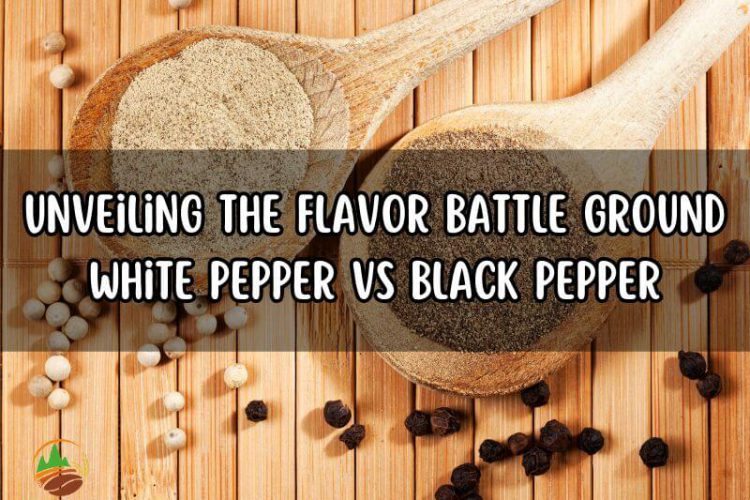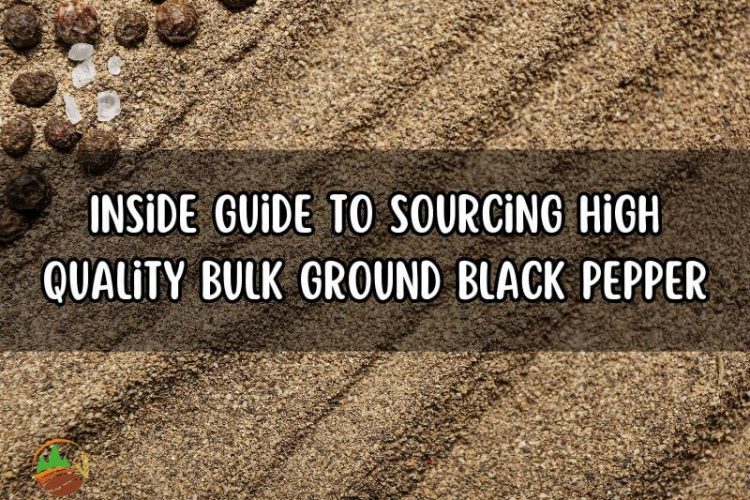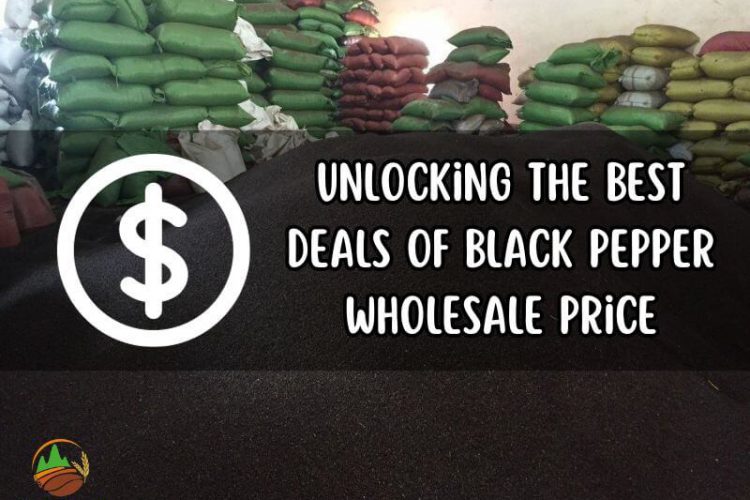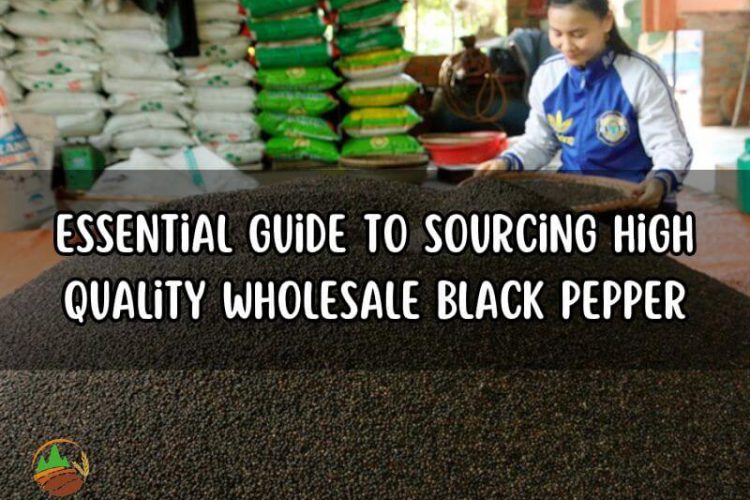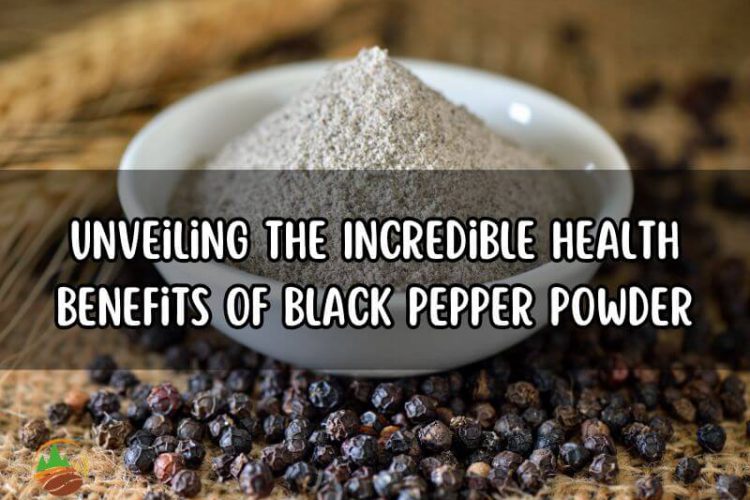The wholesalers have increasingly sought out whole white pepper as a commodity in recent years. This article explores the reasons behind its popularity and its status as a hot commodity in the wholesale market.
Table of contents
Important details about whole white pepper
Before we delve deeper into this alluring spice, let’s explore the important and unique details about this type of spice together.
What is whole white pepper and its characteristics
Whole white pepper is a spice that comes from the fruit of the Piper nigrum plant. It is the seed of a ripe pepper fruit that has had the outer layer (pericarp) removed, revealing only the inner seed. When compared to black pepper, white pepper has a milder and slightly different flavor because it includes the entire dried fruit, including the pericarp.
Here’s more information about this spice and its history:
- White pepper has a milder and less pungent flavor than black pepper. People frequently describe it as earthy with fermented or musty undertones. It also lacks black pepper’s fruity and floral notes.
- Color: White pepper is pale or off-white in color because the dark outer layer gets removed. It is paler in hue than black pepper.
- Culinary Applications: People widely use white pepper in various cuisines worldwide, especially in dishes where the presence of black specks is undesirable (like white sauces or mashed potatoes). It can be found in soups, sauces, gravies, and numerous Chinese and Thai dishes.
- White pepper, like black pepper, contains bioactive compounds like piperine, which may possess antioxidant and anti-inflammatory properties. Some cultures use it in traditional medicine due to its potential health benefits.
- Varieties: Various varieties of white pepper exist, and their flavor profiles can differ slightly based on factors like cultivation region and processing techniques.
However, if you are looking for a more convenient and versatile white pepper form, white pepper powder will be the perfect choice. White pepper powder results from grinding the peppercorns into a fine powder. It is more convenient to use than the whole peppercorns but has a shorter shelf life and loses some of its flavor and aroma over time.

Cultivation countries and production of whole white pepper
Several countries across Southeast Asia primarily cultivate this peppercorn. While the production of the white pepper is not as widespread as that of black pepper, these countries boast favorable tropical climates and conditions for its cultivation. Some major countries cultivating and producing this spice nclude:
- Vietnam: Vietnam stands as one of the largest producers and exporters of white pepper globally. Vietnamese white pepper, known for its distinct flavor and quality, enjoys high demand in international markets.
- Indonesia: Indonesia serves as another significant producer of white pepper. It is cultivated in regions such as Lampung, Bangka, and Belitung.
- India: While India is more renowned for black pepper production, it also produces white pepper in smaller quantities, mainly in the state of Kerala.
Vietnam and Indonesia represent the two largest producers of white pepper, with Vietnam, in particular, playing a significant role in the global white pepper market. The unique flavor and aroma of Vietnamese white pepper contribute to its popularity in international cuisine.

The average wholesale selling price of whole white pepper in exporting nations
Please remember that these prices are approximate and subject to change. For the most up-to-date pricing information, it is advisable to contact reputable spice suppliers or industry organizations. Additionally, prices may vary based on the type and grade of white pepper (e.g., Vietnamese, Indonesian) and specific market conditions. The average wholesale price ranged approximately as follows:
- Vietnamese White Pepper: Suppliers sold it for $3,500 to $4,500 per MT (for higher grades, such as double-washed or special grade, prices could be higher).
- Indonesian White Pepper: Suppliers sold it for $3,000 to $4,000 per MT.
- Other Origins (e.g., Malaysian, Thai): Prices varied but generally fell within the $2,500 to $4,000 per MT range.
Actual pricing can vary depending on factors. So it’s advisable to consult with spice suppliers or industry sources for the most up-to-date pricing information of white pepper price. Having comprehensive knowledge of the cost of white pepper will enhance your trading experiment.

Four renowned whole white pepper suppliers you should know about
Here is some information about four renowned suppliers known for their quality and reliability in the spice industry. Please note that the status and reputation of suppliers can change over time, so it’s essential to conduct updated research and due diligence before making business arrangements. Here are four well-known white pepper suppliers:
- Olam International: Olam is a global agribusiness company with a strong presence in the spice trade. They are known for sourcing high-quality spices, including whole white pepper, from various origins. Olam has a reputation for sustainability and traceability in its supply chain.
- Kancor Ingredients Limited: Kancor is a leading player in the spice industry and is renowned for its production of high-quality spices, including white pepper. They specialize in spice extraction and essential oils, making them a trusted supplier for various applications.
- Hoan Nghia Agri Co.: Vietnam is a major producer of white pepper, and Hoan Nghia Agri Co. is a state-owned enterprise in Vietnam specializing in spices, including white pepper. They are known for their Vietnamese white pepper, which is highly regarded for its distinct flavor and quality.
- Sambavanilla Group: Sambavanilla is a spice supplier based in Indonesia, a country known for its white pepper production. They have a reputation for providing quality white pepper sourced from Indonesian plantations.
When considering suppliers where can you buy white pepper or any other spice, it’s crucial to conduct thorough research, request samples for quality evaluation, and assess factors such as certifications, traceability, and compliance with international quality standards. Additionally, consider reaching out to industry associations and trade organizations where can you buy white pepper for recommendations and insights into reputable spice suppliers in your specific region or market.


